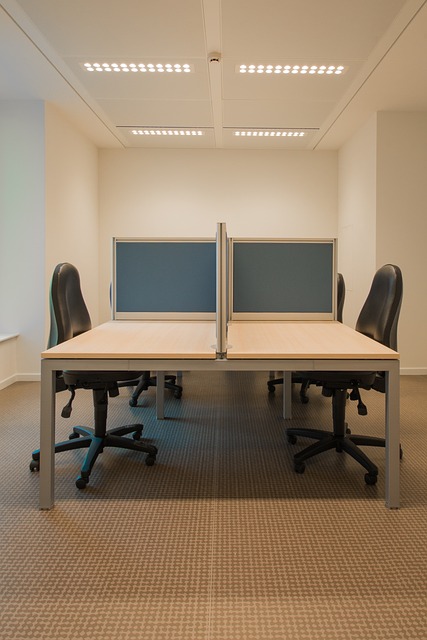The real estate industry is experiencing a significant transformation as shared coworking spaces gain popularity, providing an alternative to traditional offices. This trend caters to modern work dynamics, offering cost-effective and flexible environments for remote workers, startups, and freelancers. Coworking spaces revolutionize office landscapes by converting former corporate spaces into vibrant communities that enhance productivity, foster innovation, and encourage collaboration through affordable memberships and professional amenities. Real estate professionals are adapting to this shift, recognizing the global demand for dynamic work settings that prioritize community, creativity, and work-life balance.
In today’s dynamic work environment, shared coworking spaces are gaining traction as a game-changer in the real estate landscape. The evolving office landscape is unlocking immense potential through collaborative and flexible work environments. This trend challenges traditional concepts of proprietary offices, offering businesses and freelancers unprecedented benefits such as cost savings, community engagement, and enhanced productivity. This article explores the real estate revolution driven by coworking centers, highlighting their transformative impact on modern work dynamics.
The Evolving Office Landscape: Unlocking the Potential of Shared Spaces

The office landscape is undergoing a significant transformation, with shared coworking spaces emerging as a game-changer in modern work environments. This shift reflects a growing trend away from traditional, private office spaces, towards more flexible and collaborative settings. In today’s digital era, folks are seeking alternatives that cater to their diverse needs—from remote workers to freelancers and startups.
Real estate professionals recognize this evolving demand and are adapting by converting former offices into vibrant shared workspaces. These spaces offer a range of benefits, including cost-effectiveness, flexibility, and the opportunity for like-minded individuals to connect and foster innovation. The success of coworking is underpinned by its ability to unlock potential, enhance productivity, and create a sense of community—all while providing an environment that encourages creativity and collaboration.
Real Estate Revolution: How Coworking Centers Transform Traditional Work Environments

The rise of coworking spaces marks a significant shift in how we perceive and utilize real estate for professional purposes. Traditional office settings are giving way to a more dynamic, flexible environment where individuals can collaborate, innovate, and connect. These shared workspaces revolutionize the traditional real estate landscape by offering alternative solutions to the rigid and often expensive leasing models of the past.
Coworking centers provide an array of benefits that cater to modern-day workers’ needs. They offer affordable membership plans, allowing freelancers, entrepreneurs, and remote workers to access fully equipped offices, high-speed internet, and professional amenities. This transformation in real estate is not just about physical spaces; it’s about fostering a sense of community and enhancing productivity through diverse networking opportunities.
Benefits and Trends: Why Businesses and Freelancers Are Embracing Collaborative Culture

Shared coworking spaces are transforming the way businesses and freelancers operate, offering a host of benefits that cater to modern work preferences. One of the primary advantages is cost-effectiveness; these spaces provide affordable alternatives to traditional offices or independent working setups. This trend is especially appealing for startups and small enterprises looking to minimize overhead costs without sacrificing productivity.
The collaborative culture fostered in coworking environments encourages knowledge sharing, networking opportunities, and a sense of community among tenants. Real estate professionals are taking notice, as the demand for flexible workspace solutions continues to rise globally. This shift towards shared spaces reflects a growing desire for dynamic work environments that promote creativity, innovation, and a better work-life balance.






